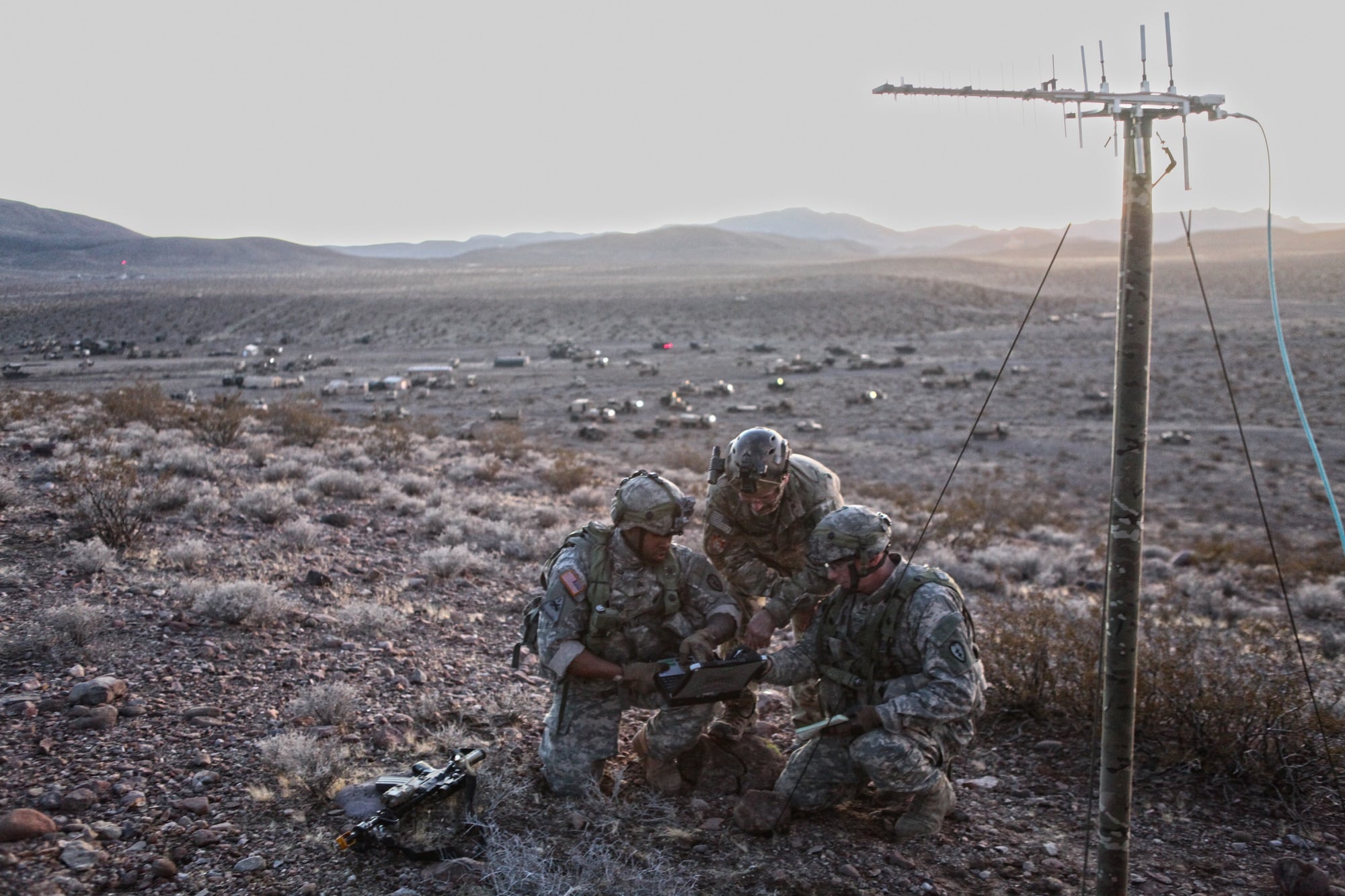After some atrophy, electronic warfare is making a resurgence within the Army and the military writ large. This is an acknowledgement of the advanced capabilities of adversaries in this space, in which some top commanders have candidly expressed that the U.S. is outgunned in EW.
The Army is trying to rebuild these capabilities both from a technological perspective and that of force structure. Through a variety of exercises and experiments, the service wants to find solutions and figure out at what echelons these should reside.
C4ISRNET recently attended one such experiment put on by the Army Communications-Electronics Research, Development and Engineering Center, or CERDEC, at Joint Base McGuire–Dix–Lakehurst, New Jersey. Cyber Blitz seeks to better understand cyber and electromagnetic activities within an Army brigade combat team fighting in a regional peer environment in the year 2025.
How did the force get to this point?
During the Cold War, the U.S. Army had capabilities and maneuver forces as electronic warfare countermeasures to jam enemy communications as well as signals for proximity fuze artillery — a munition triggered via electronic signals that would rain down multiple warheads — said Richard Wittstruck, associate director for field-based experimentation and integration at CERDEC.
With the conclusion of the Cold War, and thus the threat from these capabilities, the Army stood down its EW specialists and units, Wittstruck told C4ISRNET during the Cyber Blitz exercise.
More than a decade later, a new EW threat emerged in Iraq and Afghanistan in the form of improvised explosive devices, which insurgents remotely detonated using primitive communications devices as simple as garage door openers.
The U.S. had to react. But despite the previous success of its countermeasures, they prevented friendly forces from communicating because they jammed everything as opposed to specific frequencies — something unsuitable for future operating environments.
“Here we are 12 years later with the advent of cyber on the battlefield not just at the strategic and operations level but at the tactical level; if we look at what’s going on in the South China Sea, if we look at what’s going on in Korea, if we look at what’s going on in Crimea, one can see the sense that the opposing forces are going to think we’re going to move down in the echelonment of cyber effects,” Wittstruck said.
In the last 16 years of war, the U.S. divested a lot of high-end capabilities in the face of a technologically inferior enemy.
“We took actions inside the Army to cut our field artillery, to do away with EW inside the Army as a capability, and now we’re finding that those capabilities did not go away on our threat — enemy, adversaries —at the near-peer level. We’ve just been focusing on a different thing the last 15 years, and appropriately so,” Maj. Gen. Bo Dyess, acting director of the Army Capabilities Integration Center at Training and Doctrine Command, told reporters in February.
[A force in flux: Military adjusts to emergent domains of warfare]
At a media roundtable during September’s Cyber Blitz exercise, the U.S. Army Europe G-3 for strategic programs had some praise for Russia’s president.
“Vladimir Putin did us a pretty good favor by doing some aggressive things in Europe. It got everyone’s attention,” Col. Dennis Wille said. “NATO’s attention is solely focused on being unified and by making sure that those types of aggressive activities don’t happen anymore, and then what we learned is there are a few gaps out there. We’re very thankful that the Army and the R&D community have turned their attention on our problem because it’s given us capabilities that if those aggressive acts had not taken place, we might still be wondering if the Army was going to create those.”
‘Back to the future’
From Wittstruck’s point of view — as someone who has worked these problems for more than 30 years from the perspective of the Army, joint force and coalition — he doesn’t think the Army was caught off guard by the behavior of near-peer adversaries in this space.
“For me, I don’t know [that[ it’s as much as we were caught short as that we focused for 16 years [in] an appropriate way [on] what became a phase 4, phase 5 and, in some cases, a phase 6 operation in Iraq and Afghanistan and around the world in what we called the global war on terrorism,” he said. “Now we’re returning to our roots of regional peer engagement. … For me, this is back to the future.”
Wittstruck emphasized that he doesn’t dispute comments made by top leaders that the U.S. is sometimes outmatched in EW, but added that he doesn’t think the focus is going to be about outgunning or outmaneuvering the adversary because they have capability and capacity.
RELATED

This runs parallel with some in the Defense Department who are concerned that the boom in commercial technology allows for virtually everyone to have access to the same equipment.
This means the focus is going to be about out-planning and out-thinking the adversary in a multi-domain battle space, Wittstruck said, and about better operationalizing the technology available to all.
“That’s kind of where these experiments help … because it helps the unit to get to those kind of issues in a safe-to-fail environment,” he added. “I’m not concerned that I wake up tomorrow and a regional peer starts engaging and we’re not ready. I just spent part of my summer in Saber Guardian in Europe. I can tell you we’re ready.”
Mark Pomerleau is a reporter for C4ISRNET, covering information warfare and cyberspace.








